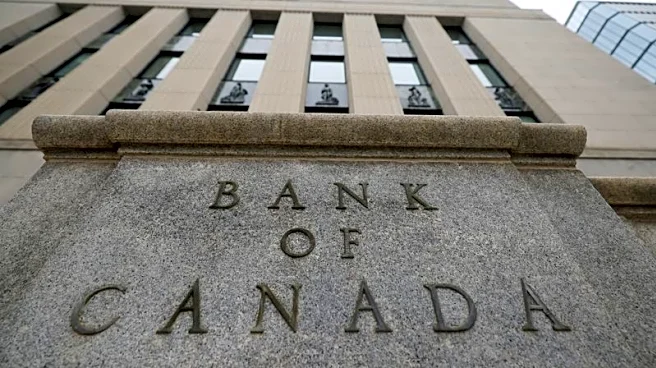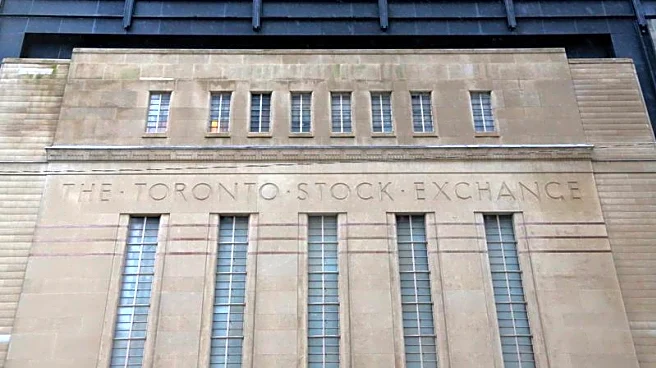What's Happening?
The Bank of Canada (BoC) is facing internal divisions regarding the effectiveness of its monetary policy in the current economic climate, as revealed in the minutes from its July 30 meeting. The BoC decided to maintain its key policy rate at 2.75% for the third consecutive time, but indicated a willingness to cut rates if the economy weakens due to U.S. tariffs and controlled inflationary pressures. The minutes highlighted a debate among the governors about the role of monetary policy in supporting economic growth, especially in the face of supply-side shocks that elevate prices. Some members believe the BoC has already provided sufficient support by setting rates within the neutral range, estimated between 2.25% and 3.25%. Others argue that more support might be necessary due to persistent economic slack, particularly if the labor market deteriorates further.
Why It's Important?
The division within the Bank of Canada underscores the challenges central banks face in navigating economic uncertainties, particularly those stemming from international trade tensions. The U.S. tariffs have introduced a layer of complexity, affecting export demand and potentially influencing business investment, employment, and household spending in Canada. The BoC's cautious approach reflects the broader uncertainty in global trade negotiations and their impact on national economies. The decision to maintain the current rate suggests a wait-and-see strategy, balancing the risks of inflation against the need for economic stimulus. This situation highlights the delicate balance central banks must strike between fostering growth and controlling inflation, especially in interconnected economies like Canada and the U.S.
What's Next?
The Bank of Canada's next rate decision is scheduled for September 17, with money markets predicting a 67% chance of another pause in rate changes. Analysts believe the worst impact of U.S. tariffs on the Canadian economy may have passed, but the BoC remains cautious, monitoring trade negotiations and economic indicators closely. The bank will continue to assess the spillover effects of lower export demand and the potential for government spending to mitigate tariff-related weaknesses. The outcome of these assessments will likely influence future monetary policy decisions, as the BoC seeks to balance short-term economic stability with long-term growth objectives.












